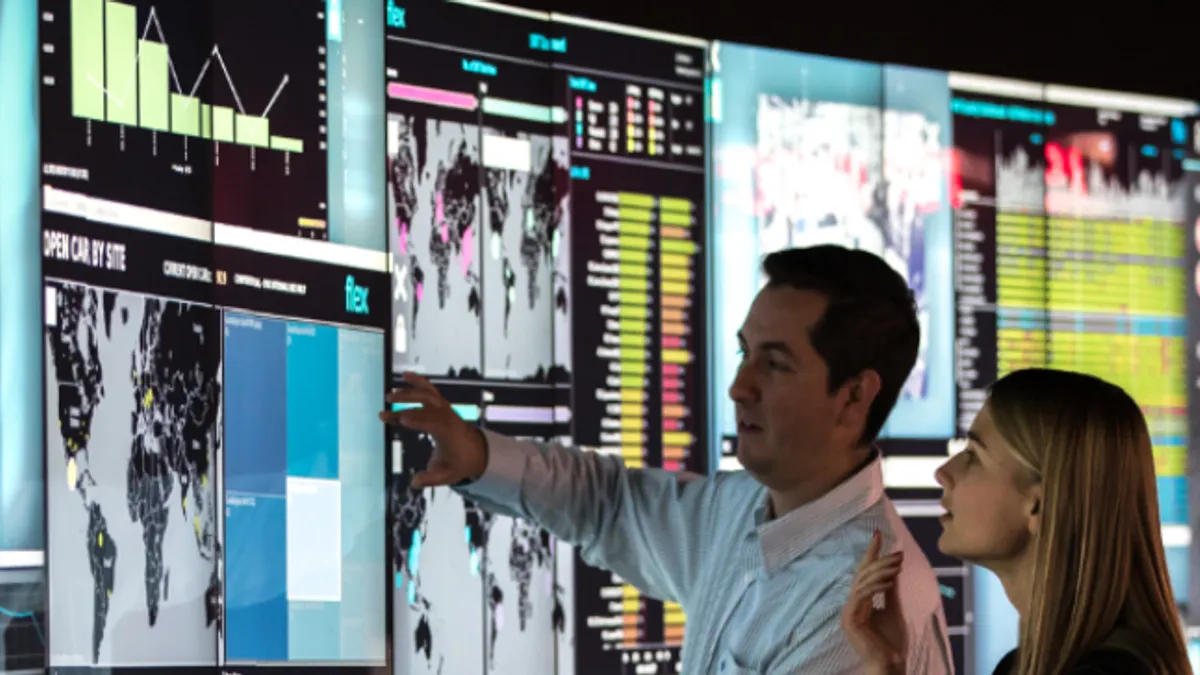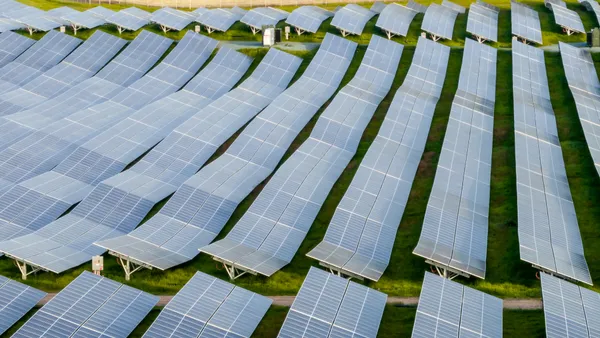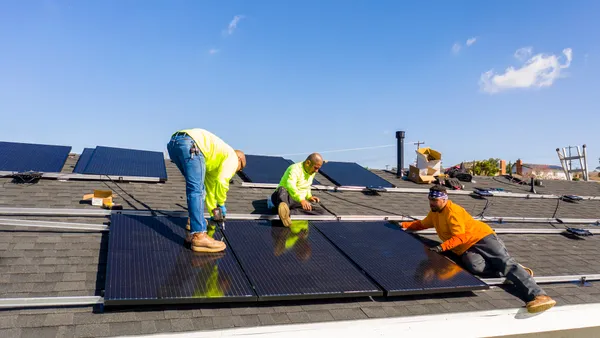Much of Leigh Zanone’s career has been spent examining and implementing ways to improve the performance of solar power plants. Zanone spent six years at Fat Spaniel, the first performance monitoring company in the solar industry, before landing at Meteocontrol, a German company focused on performance analytics. Today, Zanone is senior director of operations and asset management for 8Minute Solar Energy, one of the largest utility-scale solar developers in the United States.
Few people can rival Zanone’s direct experience developing the most effective strategies for elevating the performance of utility-scale solar projects. To Zanone, one of the most positive developments in the efforts to maximize the performance of large solar power plants is the rapid improvement in data collection made possible by higher data quality from integrated MET (meteorological) systems with more accurate sensors like the GroundWork Zenith as well as advancements in performance analytics.

“We used to be able to assume that we would be able to produce X megawatt-hours in a month and then compare it to what we actually generated,” said Zanone. “But now we can say that we expect to produce X megawatts at 6 p.m. tonight and get really close to nailing it. The level of granularity and optimization has improved dramatically.”
The importance of getting the optimal performance out of utility-scale solar plants is increasingly pressing as the solar industry matures, competing against traditional forms of generation, and expanding its geographic footprint. The combination of sensors enabling data collection and the analytics capabilities that help utility-scale solar owners take smart actions based on multiple information sources has another name: ‘The Connected Plant.’
To be sure, most utility-scale solar plants in operation today have some level of connectivity, at the very least through their SCADA system, but is that truly the analytic level they wish to achieve? A truly connected plant goes far beyond collecting and stockpiling data. “Having a data point is great, but without in-depth analytics, it’s pretty worthless,” said Marty Rogers, vice president of global services asset management at NEXTracker, the world’s largest solar tracker manufacturer. “What are you actually doing with the data you’re getting? Are you able to analyze that data across your plant and your portfolio to understand how your plant is performing and what to do to get it to the best performing level? And can you aggregate the data across multiple plants in a truly comparable and understandable manner?”
Data plus analytics equals optimized performance
What does it mean to have a connected utility-scale solar plant, and how does it deliver benefits? The answer is layered and has critical implications for everything from the construction and commissioning of a plant to its ongoing performance.
When NEXTracker works on a project, it sets up data collection and analytics to address multiple lifecycle stages of the plant, from construction through ongoing operations. Rogers equates the data and analytics possible with a connected plant to an EKG a doctor might use to monitor and diagnose a patient. Even during commissioning, for instance, data signatures can pinpoint whether or not trackers are installed properly.
Once commissioned, a connected plant gives out valuable information that can help deliver on the promise of performance with the addition of predictive maintenance. Even now NEXTracker is working on remote commissioning systems, using data that can improve the workflow, increase tracker on time delivery and monitor your plant as it is being constructed. NEXTracker’s team of data analytics PhDs look for defining “data signatures” to help continuously monitor and benchmark a plant’s operation and performance. “That data drives a bunch of different things we can go evaluate. We can see how a plant ages, we can see if it was constructed properly and we can find improvements that add to profitability,” said Rogers.
A connected plant becomes even more powerful if it’s part of a larger, connected portfolio. When it comes to actual electricity production, an individual connected plant can compare its generation with performance models. While helpful, that analysis is limited. “They’re not making comparative data analysis against multiple plants,” said Rogers, who notes that about 500,000 of NEXTracker’s 800,000-plus trackers installed around the globe are connected. This allows for comparisons of data signatures across different generations of equipment and countless installation configurations.
“We can then assess opportunities to enhance and optimize performance. Is there a construction deviation?” he said. “Is there an opportunity to modify the stowing behavior to increase system availability? We can see this in the data and then act quickly to resolve any problems.”
Cybersecurity and standardization
Sanjay Shrestha doesn’t have to be convinced about the wisdom of a connected plant. As energy systems performance manager for SOLV, the operations and maintenance (O&M) arm of Swinerton Renewable Energy, Shrestha’s job is to ensure the company’s utility-scale solar projects are operating as expected.
In particular, Shrestha values the ability to monitor and control solar plants based on data that comes into Swinerton’s San Diego control center. Remote monitoring allows SOLV to detect any potential equipment problems long before they negatively impact production and revenues. “You can see so much with data,” he said. “Without it, you are relying on yearly periodic maintenance, which raises the possibility something won’t get fixed for a year, or you might not be able to find a problem when it’s a large plant covering hundreds of acres.”

Beyond improving maintenance and production, Shrestha believes connected plants also help with risk mitigation for plant operators and builders. As the person at SOLV who analyzes performance contracts, Shrestha personally understands how a connected plant reduces risk. “You don’t want to take additional risk when you have a performance guarantee,” he said. “If you don’t have data and proper analytics, and you’re guaranteeing performance, you’re taking a lot of risks.”
To take advantage of all of the benefits of a connected plant, cybersecurity concerns must be addressed. In both the U.S., and in many nations around the world, that means adhering to the regulations outlined in the North American Electric Reliability Corporation’s (NERC) Critical Infrastructure Protection (CIP) Standards. These standards ensure that any connections to a solar plant won’t lead to an injection of malware or otherwise enable a hacker to gain access to the plant’s computer systems. “Based on what I see in my own company, you need to come up with a very aggressive NERC CIP program and establish a comprehensive cyber awareness and training initiatives,” said Shrestha.
One area where Shrestha would like to see improvement is in the overall uniformity of everything from monitoring and reporting metrics to communication protocols and data formats. Efforts to create and standardize data sets across the solar industry to make it easy to exchange information are already underway as part of what’s known as the Orange Button initiative. A common language and standards around data will be essential as more utility-scale solar owners seek the advantages of connected plants.
“I think the industry has changed quite a bit in the last five years as far as data analysis,” said Shrestha. “And I think now, finally, we have seen enthusiasm where owners want to spend a little more up front so they will see the benefits later on during the plant’s lifetime.”
Connectivity is an imperative for the future and is one of the essential ways that plants will manage, improve and ultimately win in the energy generation business. Secure connections, with trusted partners that can truly analyze the meaning of the data, will improve performance and ROI for plant owners. It is time that the solar industry comes into the light – connectivity, predictive analytics, portfolio-based analysis and a focus on production is the future of large-scale solar.









